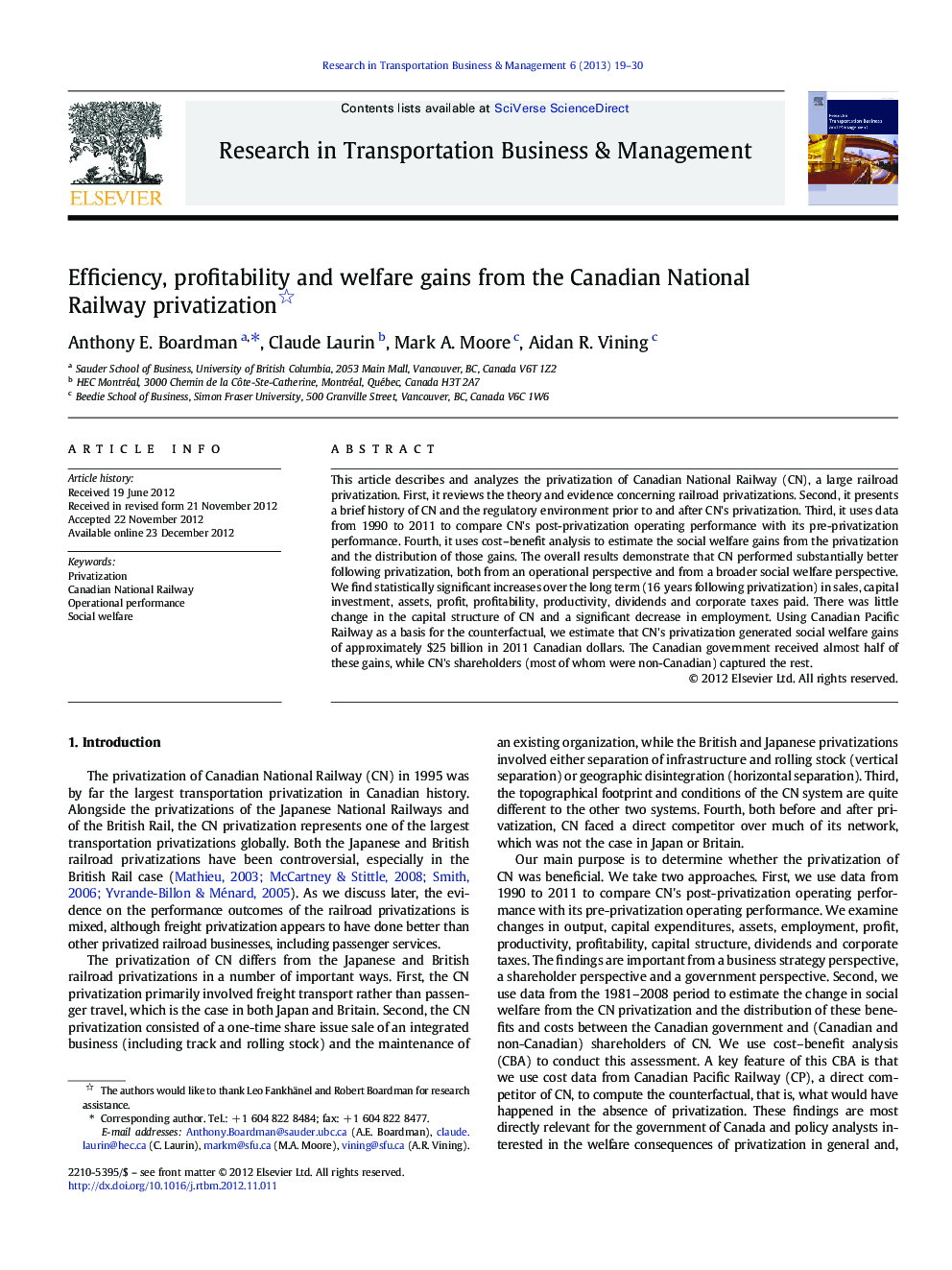| Article ID | Journal | Published Year | Pages | File Type |
|---|---|---|---|---|
| 1000821 | Research in Transportation Business & Management | 2013 | 12 Pages |
This article describes and analyzes the privatization of Canadian National Railway (CN), a large railroad privatization. First, it reviews the theory and evidence concerning railroad privatizations. Second, it presents a brief history of CN and the regulatory environment prior to and after CN's privatization. Third, it uses data from 1990 to 2011 to compare CN's post-privatization operating performance with its pre-privatization performance. Fourth, it uses cost–benefit analysis to estimate the social welfare gains from the privatization and the distribution of those gains. The overall results demonstrate that CN performed substantially better following privatization, both from an operational perspective and from a broader social welfare perspective. We find statistically significant increases over the long term (16 years following privatization) in sales, capital investment, assets, profit, profitability, productivity, dividends and corporate taxes paid. There was little change in the capital structure of CN and a significant decrease in employment. Using Canadian Pacific Railway as a basis for the counterfactual, we estimate that CN's privatization generated social welfare gains of approximately $25 billion in 2011 Canadian dollars. The Canadian government received almost half of these gains, while CN's shareholders (most of whom were non-Canadian) captured the rest.
